Categories: Featured Articles » Novice electricians
Number of views: 4102
Comments on the article: 0
Voltage, resistance, current and power are the main electrical quantities
In electrical engineering, it makes no sense to simply say “electricity”. Here it is always necessary to specify what exactly is being discussed. We can mean the electric charge of the capacitor, the voltage in the socket, the current flowing through the wires, or for example the power that the electric meter in our apartment wound in a month.
In any case, there is no such quantity as electricity, there is the quantity “amount of electricity”, correctly called the electric charge, which is measured in pendants. This is an electric charge - it moves along the wires, accumulates on the plates of the capacitor, is periodically present at the terminals (minimum - on the phase wire) of the outlet, moves in the form of current when the electric network performs work. The main electrical quantities are somehow related to the charge. We will talk about these values today.
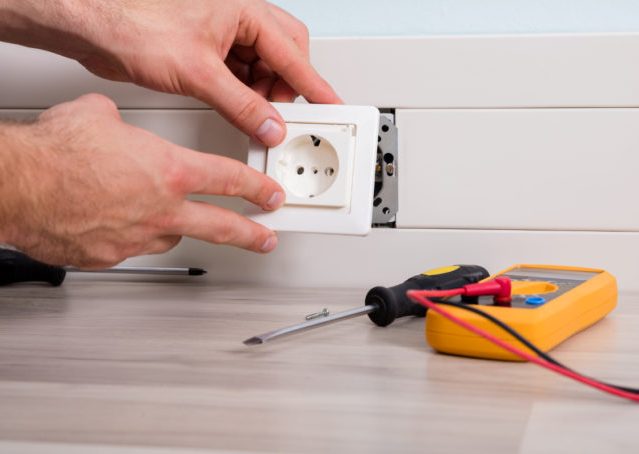
Voltage
The voltage U is measured between two points on the circuit. In order for a stable alternating or constant voltage to begin to be present in a closed circuit, a current source is needed that can ensure that this voltage is maintained at the ends of the circuit. This source will serve as a source of EMF - electromotive force, which, like voltage, is measured in volts.
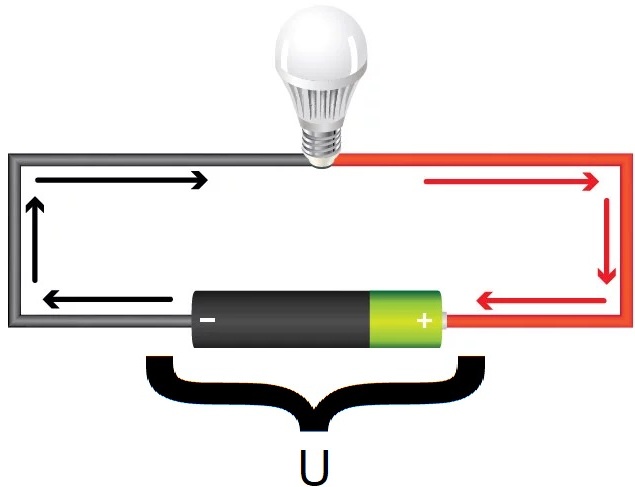
If such a source is connected to a closed circuit, then, firstly, voltage will be present between the terminals of the source, that is, at the ends of the circuit, and secondly, at the ends of all sections of this circuit, if it is conditionally divided into parts.
At each moment of time, the electric voltage acting on a particular section of the circuit can have a different value than at the previous moment, if the circuit is powered by a variable emf source, or the same value if it is a constant emf source, and the circuit, respectively, is a direct current circuit.
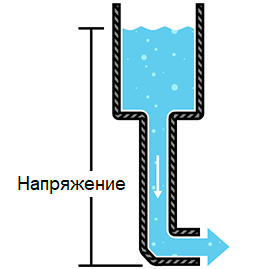
The voltage at the ends of the DC circuit is similar to the height difference on the side of a mountain, and the charge under these conditions is like water raised to a height, only with respect to the electric field, this difference is called the difference of (electric) potentials, since we are not talking about the gravitational field.
The potential difference between two points is 1 volt, if to move a charge of 1 pendant from one point to another, work on it must be done in the amount of 1 joule. A volt is also equal to the electric voltage causing a direct current of 1 ampere in the electric circuit at a power of 1 watt, but more on that later.
Current
When an electric voltage is present at the ends of a section of a circuit (conductor), that is, when there is a difference in electric potentials, this means that an electric field acts in the conductor (along the length of the section under consideration). An electric field acts forcefully on charged particles.
In metals, for example, free electrons are carriers of a negative charge, and can come into translational motion if they suddenly find themselves in an external electric field, the source of which is in this case the emf source. When electrons come into motion under the influence of an electric field, they become a moving charge, that is, an electric current I.

The amount of charge is measured in coulombs, and the current characterizes the speed of charge movement through the cross section of the conductor (per unit time). When an electric charge of one pendant passes through the cross section of the conductor in one second, the current in the conductor is 1 ampere. In analogy with water - the more water passes through the pipe section per second - the greater the current.
Resistance
Under the influence of electric voltage, the charge moves through the cross section of the conductor, forming a current, but it does not move unhindered. Since we began to consider a metal conductor, we will continue with it.
Electrons in a conductor moving under the influence of an electric field run into obstacles inside the conductor - atoms of the crystal lattice, as well as each other, due to the chaotic component (thermal) of the movement of electrons and atomic vibrations.
These obstacles provide a kind of resistance, slow down the electrons, reduce the current compared to how much it could develop if there were no such obstacles. But this kind of resistance R in real conductors (circuits) is always there.

This value is called electrical resistance in electrical engineering. Electrical resistance is measured in ohms. One Ohm is equal to the electrical resistance of a section of an electrical circuit, between the ends of which a direct current of 1 ampere flows at a voltage of 1 volt at the ends.
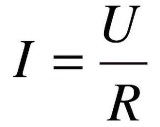
The greater the resistance characterizing a given conductor, the smaller the current will be at the same voltage at the ends of this conductor. This dependence is called Ohm's law for a section of an electric circuit: the magnitude of the current in a section of a circuit is directly proportional to the voltage at the ends of this section and inversely proportional to the electrical resistance of a given section of the circuit.
Power
Speaking about the electric circuit, voltage, resistance and current, one cannot but end the topic of basic electrical quantities with a story about the electric power P. When a current is established and continues to flow in the circuit under the influence of voltage, the emf source does the work A on the circuit.
In fact, work is performed by an electric field on an electric charge that moves in this field. The amount of perfect work depends on the potential difference that the charge has overcome and on the magnitude of this charge. The faster the work was done, the higher the power of the process.
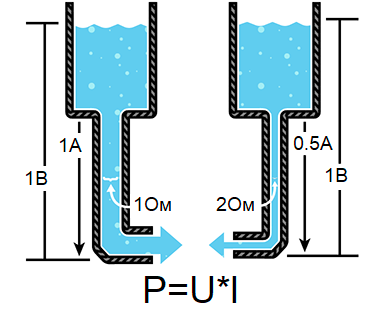
In the case of current, we usually talk about the power of the source that performed the work, as well as the power of the consumer (circuit). The electrical power spent on useful work is measured in watts. For any type of energy, not only for electric energy, 1 watt is defined as the power at which 1 joule of work is performed in 1 second of time.
See also at bgv.electricianexp.com
:
